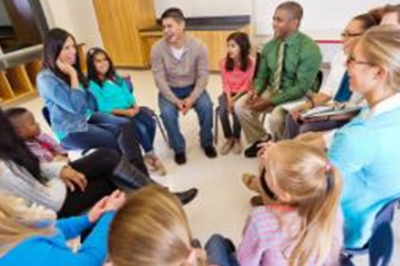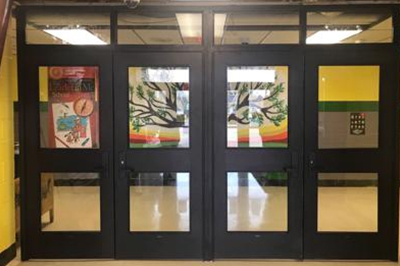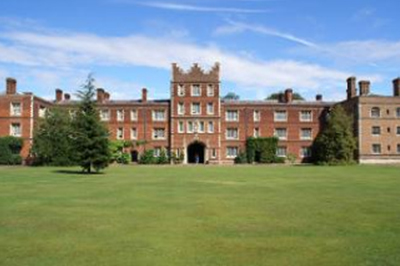Safety Extra Features
Safety Extra Features
Feeling Safe (FS)
Overall, teachers, parents, and students feel safe in the school building.
From the supporting literature (linked), providing visibility with visual connectivity decrease the fear of crime among students.
General Safety in School Buildings (GS)
General safety conditions provided in school buildings and campuses.
From the supporting literature (linked),
1. Safety, in general, in school buildings, is associated to the crime rate. among safety features, the school security cameras is discussed.
2. Designing features that should be considered for improving safety in school buildings are: a) Positive Body Language, (b) Natural Surveillance, (c) Natural Access Control and entrance, (d) Equipment for safe traffic, (e) Lockdown Rooms, (f) The design of Meeting Rooms and key offices, and (g) Access to the roof.
3. Some of the safety concerns are mensioned as; water quality, adequate restrooms, emergency communication system, fire safety system and security systems.
4. Among safety components for creating safe schools, a) creating a conducive school climate and culture, b) promoting use of quality facilities and technology, c) creating a link between the school, mental health, and social services, and d) improved parental and community involvement are discussed.
Outdoor Green Areas (OGA)
Outdoor green spaces such as playground areas and its association with safety in school buildings and feeling safe among students.
From the supporting literature (linked), greening vacant lots is associated with the following; (a) improved health, (b) reduction in violence and victimization, (c) reduction in crime and vandalism, (d) reduction in stress level, and (e) increase in physical exercise.
References
1. Barrett, B. J. (2010). Is” Safety” Dangerous? A Critical Examination of the Classroom as Safe Space. Canadian Journal for the Scholarship of Teaching and Learning, 1(1), 9.
2. Blum, R. (2007). Best practices: building blocks for enhancing school environment. Baltimore, MD: Johns Hopkins Bloomberg School of Public Health.
3. Bracy, N. L. (2011). Student perceptions of high-security school environments. Youth & Society, 43(1), 365-395.
4. Branas, C. C., Cheney, R. A., MacDonald, J. M., Tam, V. W., Jackson, T. D., & Ten Have, T. R. (2011). A difference-in-differences analysis of health, safety, and greening vacant urban space. American journal of epidemiology, 174(11), 1296-1306.
5. Blackmore, J., Bateman, D., Loughlin, J., O’Mara, J., Aranda, G. (2011). “Research into the Connection Between Built Learning Spaces and Student Outcomes: Literature Review”. Department of Education and Early Childhood Development, State of Victoria.
6. Bosworth, K., Ford, L., & Hernandaz, D. (2011). School climate factors contributing to student and faculty perceptions of safety in select Arizona schools. Journal of school health, 81(4), 194-201.
7. Cornell, D. G., & Mayer, M. J. (2010). Why do school order and safety matter?. Educational Researcher, 39(1), 7-15.
8. De Jesus, M., Puleo, E., Shelton, R. C., & Emmons, K. M. (2010). Associations between perceived social environment and neighborhood safety: Health implications. Health & place, 16(5), 1007-1013.
9. Dorn, M., Atlas, R., Schneider, T., Dorn, C., Nguyen, P., Satterly, S., Bentley, C. R., Ellis, C, R., Goble, C., Bellaire, U., Wilson, R., Billinger, M. (2014). “Seven Important Building Design Features to Enhance School Safety and Security”. 2014 Safe Havens International Inc. Indiana.
10. Earthman, G. I. (2004). Prioritization of 31 criteria for school building adequacy. Baltimore, MD: American Civil Liberties Union Foundation of Maryland.
11. Griffith, J. (1998). The relation of school structure and social environment to parent involvement in elementary schools. The Elementary School Journal, 99(1), 53-80.
12. Henrich, C. C., Schwab-Stone, M., Fanti, K., Jones, S. M., & Ruchkin, V. (2004). The association of community violence exposure with middle-school achievement: A prospective study. Journal of applied developmental psychology, 25(3), 327-348.
13. Hong, J. S., & Eamon, M. K. (2012). Students’ perceptions of unsafe schools: An ecological systems analysis. Journal of Child and Family Studies, 21(3), 428-438.
14. Kena, G., Hussar, W., McFarland, J., de Brey, C., Musu-Gillette, L., Wang, X., … & Barmer, A. (2016). The Condition of Education 2016 (NCES 2016-144)”. U.S. Department of Education, National Center for Education Statistics. Washington, DC. Retrieved 7/5/2016 from http://nces.ed.gov/pubsearch.
15. Keesee, M. S., Janitz, A. E., Holliday, L., Wachter, H., & Skraastad-Jurney, P. (2017). Balancing School Safety with Healthy Learning Spaces. In AEI 2017 (pp. 126-137).
16. Lee, S., & Ha, M. (2015). The Duality of Visibility: Does Visibility Increase or Decrease the Fear of Crime in Schools′ Exterior Environments?. Journal of Asian Architecture and Building Engineering, 14(1), 145-152.
17. Namazian, P. A., & Mehdipour, A. (2013). Psychological Demands of the Built Environment, Privacy, Personal Space and Territory in Architecture. International Journal of Psychology and Behavioral Sciences, 3(4), 109-113.
18. Peguero, A. A., Portillos, E. L., Hong, J. S., González, J. C., Kahle, L. L., & Shekarkhar, Z. (2013). Victimization, urbanicity, and the relevance of context: school routines, race and ethnicity, and adolescent violence. Journal of criminology, 2013.
19. Perumean-Chaney, S. E., & Sutton, L. M. (2013). Students and perceived school safety: The impact of school security measures. American Journal of Criminal Justice, 38(4), 570-588.
20. Pollack, I., & Sundermann, C. (2001). Creating safe schools: A comprehensive approach. Juv. Just., 8, 13.
21. Shumow, L., & Lomax, R. G. (2001). Predicting perceptions of school safety. School community journal, 11(2), 93-112.
22. Tanner-Smith, E. E., & Fisher, B. W. (2016). Visible school security measures and student academic performance, attendance, and postsecondary aspirations. Journal of youth and adolescence, 45(1), 195-210.
23. Thompson, N. E., & Wheeler, J. P. (2010). Learning environment: Creating and implementing a safe, supportive learning environment. National Standards for Teachers of Family and Consumer Sciences, 235.
24. Wortley, R. (2001). A classification of techniques for controlling situational precipitators of crime. Security Journal, 14(4), 63-82.
25. Zhang, A., Musu-Gillette, L., & Oudekerk, B. A. (2016) Indicators of School Crime and Safety: 2015. NCES 2016-079. NCJ 249758. National Center for Education Statistics. U.S. Department of Education and Bureau of Justice Statistics Office of Justice Programs U.S. Department of Justice, Washington D.C.
26. Burdick-Will, J (2013) School Violent Crime and Academic Achievement in Chicago. Sociology of Education, 86(4).
27. Kupchik, A; Ward, G (2014) Race, Poverty, and Exclusionary School Security An Empirical Analysis of U.S. Elementary, Middle, and High Schools. Youth Violence and Juvenile Justice, 12(4), 332-354.
28. Carver, A; Timperio, A; Crawford, D (2008) Playing it safe: The influence of neighborhood safety on children’s physical activity—A review. Health & Place, 14(2), 217-227.
29. Milam, A.J; Furr-Holden, C.D.M; Leaf, P.J (2010) Perceived School and Neighborhood Safety, Neighborhood Violence and Academic Achievement in Urban School Children. Urban Review, 42, 458-467.
30. Burdick-Will, J (2016) Neighborhood Violent Crime and Academic Growth in Chicago: Lasting Effects of Early Exposure. Social Forces, 95(1), 133-158.
31. Upton, P. D; Woolley, M. E; Hong, J. S (2012) Exposure to violence, student fear, and low academic achievement: African American males in the critical transition to high school. Children and Youth Services Review, 34(2), 388-395.







